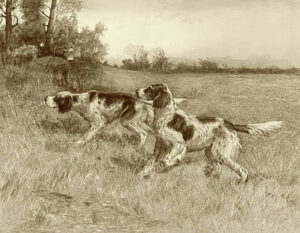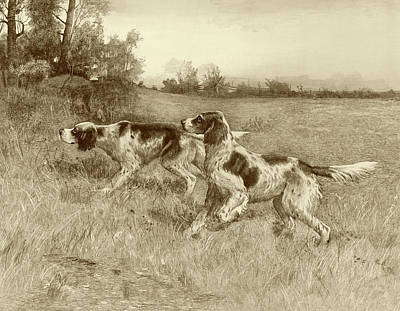What is a ‘well-bred’ dog?
I know what a well-bred dog means to me. It means that the dog in question has been selectively bred for temperament, suitability for its breed-specific task, health, soundness, and longevity.
Its producer (usually called a breeder, but for honesty and objectivity, ‘producer’ fits better) is willing to support the buyer’s interests, doesn’t adhere to the dogma of ‘preservation’ nonsense without being able to back up that claim (and yes, I’m looking at YOU, showpeople. A conformation title doesn’t make you a preservation ANYTHING. That dogma don’t hunt) with titles *after* a dog’s name.
A well-bred dog doesn’t even need to be a purebred dog. It can be a cross-bred dog, but it is never a random-bred dog. I am not opposed to the practice of breeding dogs of different breeds together if the goal is to *improve* something about either. After all, purebred dogs are nothing more than an amalgam of landrace types of dogs combined together to produce an uber dog capable of fulfilling a necessary role. Looks were a casual afterthought because somebody preferred a dog to appear a certain way.
In our vanity as ‘creators’, it became the easiest thing to manipulate.
For folks who want to argue and defend the production of dogs unsuitable for their original purpose, that’s fine. Just don’t try to delude people into believing anything about ‘preservation’ breeding, because you did no such thing. Your Neapolitan Mastiff hasn’t seen combat in over a thousand years, and to think that one of today’s iterations would even be capable is laughable.
Convenient that there is no way to test that.
There are ways to test the working function of many different breeds, most of which are relatively inexpensive and can be very telling about a dog’s suitability for making more dogs. And I’m not talking about ‘agility’. It’s probably a fun thing to do with a dog but is not designed to test a dog’s suitability for breeding. The attributes that make a dog a competitive prospect for agility are not compatible with how most people live with their dogs.
My views on rally are well known. It is not an acceptable test of a dog’s capability to function independently of a handler and is essentially useless as a bellwether to suitability as a breeding candidate.
The AKC is rife with ridiculousness. Recently I read that the reason Samoyeds were bred to ‘smile’ was to prevent icicles from forming on their lips. Fer serious? Somebody actually wrote that bullshit?
https://www.facebook.com/reel/1644661872993321
Please.
Or that the wrinkles on a bulldog are so blood can flow away from the eyes and nose.
Uh. No.
No way to test that pile of garbage either. Bull baiting is illegal around the world, and I suspect that a modern bulldog would be gassed before it left it’s air-conditioned motor home on the way to the ‘fight’. You know. Sinus nares and all…
How about these brachycephalic dog producers start breeding for unobstructed airways and soundness? Too much to ask? That cute pigtail is the harbinger of spinal disorders throughout that dog’s life, compounded by entirely disproportionate weight distribution through the forehand and along the spine. For what? It serves no purpose.
And I for one, choose not to be saddled with a walking vet bill.
My own choices over the years have been largely guided by the health and longevity of the breeds I prefer. Pointers are a relatively long-lived, healthy breed, as are English Shepherds. There are few glaring genetic defects in either breed that cannot be selected away from, and there is sufficient genetic distribution to steer clear of bottlenecks that encourage those defects. There are some, just not many, and everybody knows where those genes are and where they came from.
Their value as working dogs can be tested regularly, in breed specific pursuits that can truly measure the worthiness of that prospect.
There are others. Many dog breeds need to shed any claim to be working dogs and just breed for the show ring, or for the pet market. There is no shame in that, either. The glory of dogs is their diversity, and how quickly it can be manipulated to a specific purpose.
If one’s goal as a dog ‘breeder’ is the show ring, that’s fine. Just don’t go around telling naive dog owners that your dog can hunt, track, run the Iditarod, become a MWD, etc. If one’s goal as a dog ‘breeder’ is to produce dogs for the companion animal market, following fads makes you just as culpable as the ‘preservation’ breeder nonsense.
Have a purpose, and don’t pollute the water even further with weak nerved, difficult to groom, unhealthy ‘fad’ couplings that offer no real measurable advantage than that purebred producer you claim to be better than.
I ain’t buying it. You continue to invite my ire every time I hear the same, predictable words that fall out of the gobs of folks that have something to sell, but cannot defend their choices beyond sanctimonious bullshit. AKC papers are about as relevant as ‘F1’ when the effort to screen for health testing is universal for both, and costs no more for that crossbred designer dog than that registered purebred.
And let’s not forget the work, shall we?
Let’s start with “can my dog climb a flight of stairs without having a heart attack?”
Do better.


